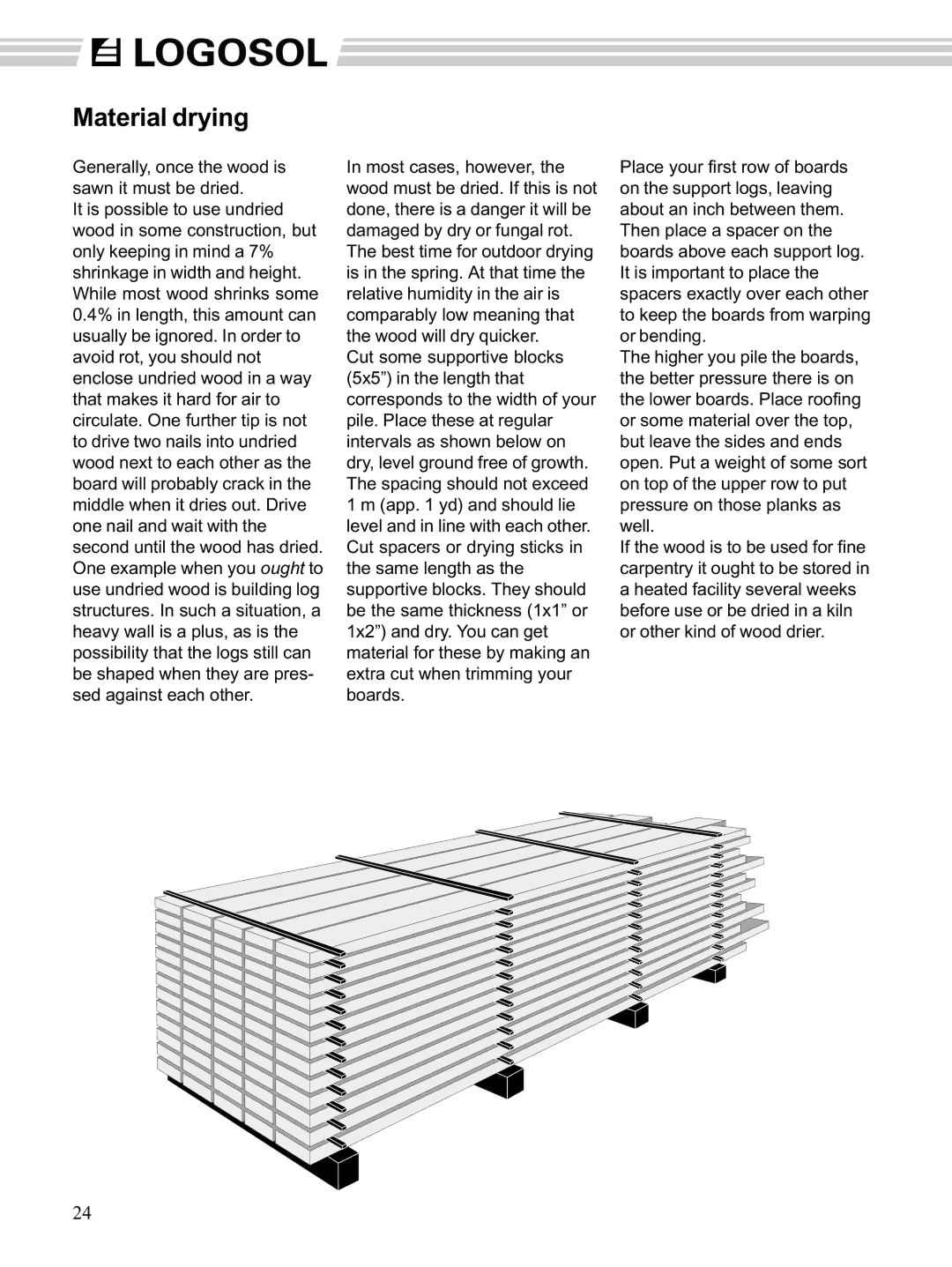
Material drying
Generally, once the wood is sawn it must be dried.
It is possible to use undried wood in some construction, but only keeping in mind a 7% shrinkage in width and height. While most wood shrinks some 0.4% in length, this amount can usually be ignored. In order to avoid rot, you should not enclose undried wood in a way that makes it hard for air to circulate. One further tip is not to drive two nails into undried wood next to each other as the board will probably crack in the middle when it dries out. Drive one nail and wait with the second until the wood has dried. One example when you ought to use undried wood is building log structures. In such a situation, a heavy wall is a plus, as is the possibility that the logs still can be shaped when they are pres- sed against each other.
In most cases, however, the wood must be dried. If this is not done, there is a danger it will be damaged by dry or fungal rot. The best time for outdoor drying is in the spring. At that time the relative humidity in the air is comparably low meaning that the wood will dry quicker.
Cut some supportive blocks (5x5”) in the length that corresponds to the width of your pile. Place these at regular intervals as shown below on dry, level ground free of growth. The spacing should not exceed 1 m (app. 1 yd) and should lie level and in line with each other. Cut spacers or drying sticks in the same length as the supportive blocks. They should be the same thickness (1x1” or 1x2”) and dry. You can get material for these by making an extra cut when trimming your boards.
Place your first row of boards on the support logs, leaving about an inch between them. Then place a spacer on the boards above each support log. It is important to place the spacers exactly over each other to keep the boards from warping or bending.
The higher you pile the boards, the better pressure there is on the lower boards. Place roofing or some material over the top, but leave the sides and ends open. Put a weight of some sort on top of the upper row to put pressure on those planks as well.
If the wood is to be used for fine carpentry it ought to be stored in a heated facility several weeks before use or be dried in a kiln or other kind of wood drier.
24
